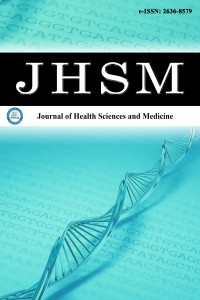1.
Johansen KL, Chertow GM, Gilbertson DT, et al. US Renal Data System 2021 Annual Data Report: Epidemiology of Kidney Disease in the United States. <em>Am J Kidney Dis.</em> 2022;79(4 Suppl 1):A8-A12.
2.
Ortiz A, Covic A, Fliser D, et al. Epidemiology, contributors to, and clinical trials of mortality risk in chronic kidney failure. <em>Lancet</em>. 2014;383(9931):1831-1843.
3.
Genovesi S, Boriani G, Covic A, et al. EUDIAL working group of ERA-EDTA. Sudden cardiac death in dialysis patients: different causes and management strategies. <em>Nephrol Dial Transplant.</em> 2021;36(3):396-405.
4.
Saran R, Robinson B, Abbott KC, et al. US Renal Data System 2018 Annual Data Report: Epidemiology of Kidney Disease in the United States. <em>Am J Kidney Dis</em>. 2019;73(3 Suppl 1):A7-A8.
5.
Wilson GJ, Van K, O’Lone E, et al. Range and consistency of cardiovascular outcomes reported by clinical trials in kidney transplant recipients: a systematic review. <em>Transplant Direct.</em> 2022;9(1):e1398.
6.
Di Iorio B, Bellasi A. QT interval in CKD and haemodialysis patients. <em>Clin Kidney J.</em> 2013;6(2):137-1343.
7.
Goldberger AL, Goldberger ZD, Shvilkin A. Goldberger’s Clinical Electrocardiography a Simplified Approach 8<sup>th</sup> ed. Elsevier Saunders, 2013.
8.
Salles GF, Xavier SS, Sousa AS, Hasslocher-Moreno A, Cardoso CR. T-wave axis deviation as an independent predictor of mortality in chronic Chagas’ disease. <em>Am J Cardiol.</em> 2004;93(9): 1136-1140.
9.
Jankowski J, Floege J, Fliser D, Böhm M, Marx N. Cardiovascular disease in chronic kidney disease: pathophysiological insights and therapeutic options. <em>Circulation.</em> 2021;143(11):1157-1172.
10.
Boriani G, Savelieva I, Dan GA, et al. Chronic kidney disease in patients with cardiac rhythm disturbances or implantable electrical devices: clinical significance and implications for decision making-a position paper of the European Heart Rhythm Association endorsed by the Heart Rhythm Society and the Asia Pacific Heart Rhythm Society. <em>Europace</em>. 2015;17(8):1169-1196.
11.
Xu C, Tsihlis G, Chau K, Trinh K, Rogers NM, Julovi SM. Novel perspectives in chronic kidney disease-specific cardiovascular disease. <em>Int J Mol Sci.</em> 2024;25(5):2658.
12.
Akcay M, Yıldırım U. Effect of dialysis and transplantation on myocardial repolarization parameters and P-wave dispersion in chronic kidney disease. <em>J Arrhythm.</em> 2021;37(2):348-355.
13.
Genovesi S, Rossi E, Nava M, et al. A case series of chronic haemodialysis patients: mortality, sudden death, and QT interval. <em>Europace.</em> 2013;15(7):1025-1033.
14.
Sherif KA, Abo-Salem E, Panikkath R, et al. Cardiac repolarization abnormalities among patients with various stages of chronic kidney disease. <em>Clin Cardiol.</em> 2014;37(7):417-421.
15.
Oktavia D, Nasution SA, Setiati S. The clinical factors’prediction of increased intradialytic QT dispersion on the electrocardiograms of chronic hemodialysis patients. <em>Saudi J Kidney Dis Transpl.</em> 2013;24(2):274-280.
16.
Hage FG, de Mattos AM, Khamash H, et al. QT prolongation is an independent predictor of mortality in end-stage renal disease. <em>Clin Cardiol.</em> 2010;33(6):361-366.
17.
Beaubien ER, Pylypchuk GB, Akhtar J, et al. Value of corrected QT interval dispersion in identifying patients initiating dialysis at increased risk of total and cardiovascular mortality. <em>Am J Kidney Dis.</em> 2002;39(4):834-842.
18.
Monfared A, Ghods AJ. Improvement of maximum corrected QT and corrected QT dispersion in electrocardiography after kidney transplantation. <em>Iran J Kidney Dis.</em> 2008;2(2):95-98.
19.
Monfared A, Atrkar Roshan Z, Salari A, et al. QT intervals in patients receiving a renal transplant. <em>Exp Clin Transplant.</em> 2012; 10(2):105-109.
20.
Durak MI, Algul Durak B. The comparison of QTc dispersion between renal transplant recipients and healthy individuals. <em>Cureus.</em> 2022;14(12):e32458.
21.
Liu P, Wang L, Han D, Sun C, Xue X, Li G. Acquired long QT syndrome in chronic kidney disease patients. <em>Ren Fail.</em> 2020; 42(1):54-65.
22.
Robison LB, Brady WJ, Robison RA, Charlton N. QT interval prolongation and the risk of malignant ventricular dysrhythmia and/or cardiac arrest: Systematic search and narrative review of risk related to the magnitude of QT interval length. <em>Am J Emerg Med.</em> 2021;49:40-47.
23.
Scherer ML, Aspelund T, Sigurdsson S, et al. Abnormal T-wave axis is associated with coronary artery calcification in older adults. <em>Scand Cardiovasc J.</em> 2009;43(4):240-248.

